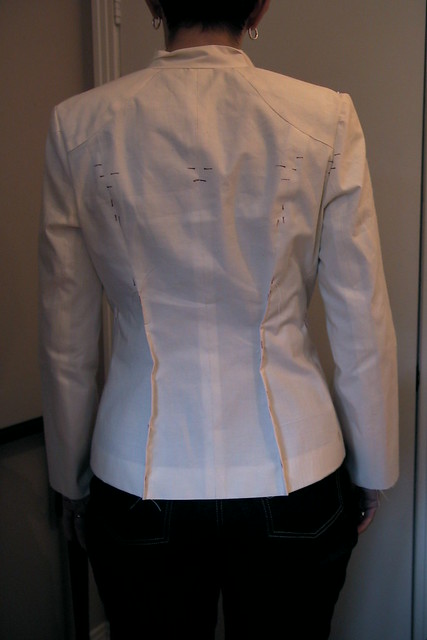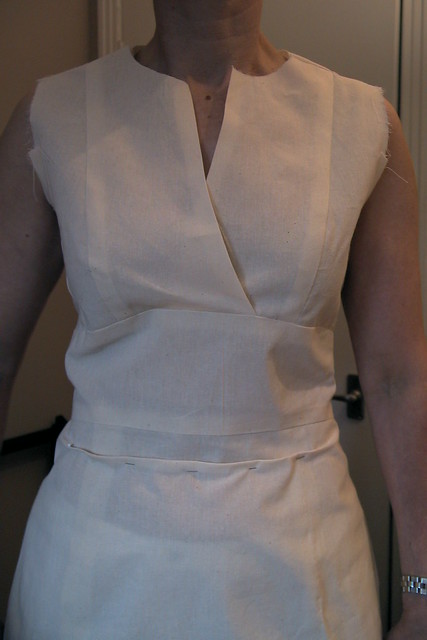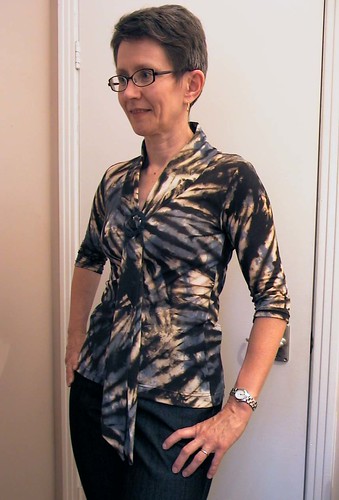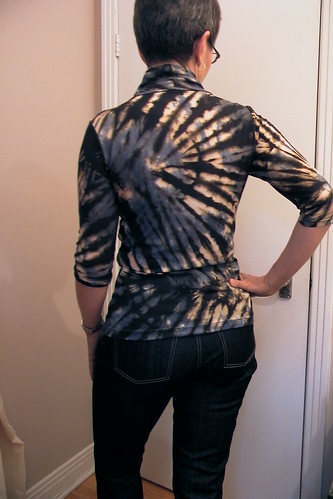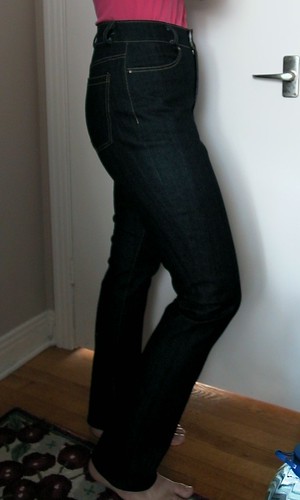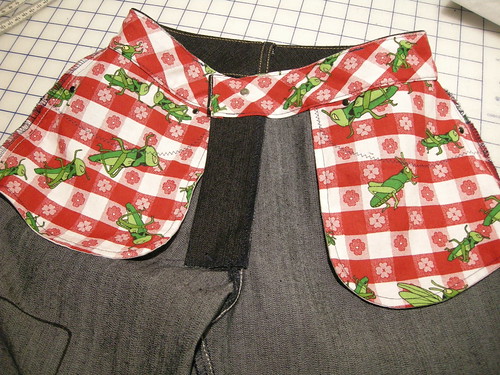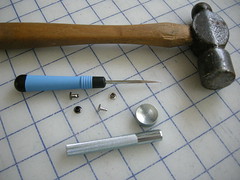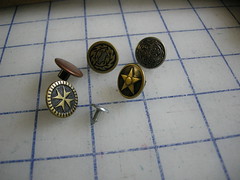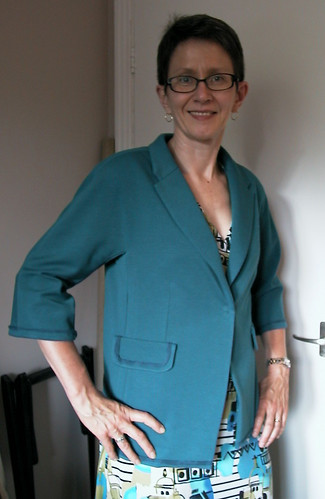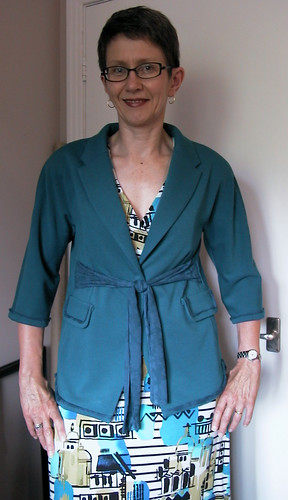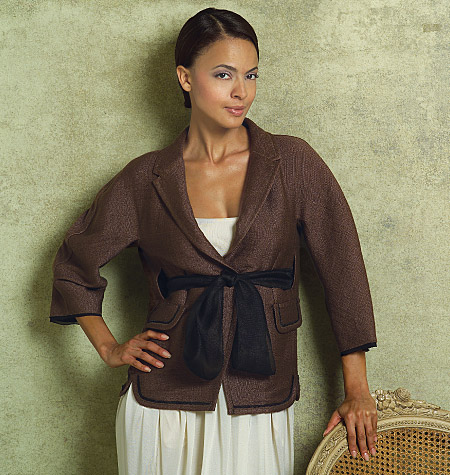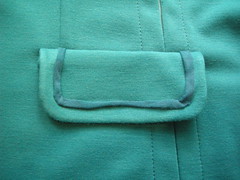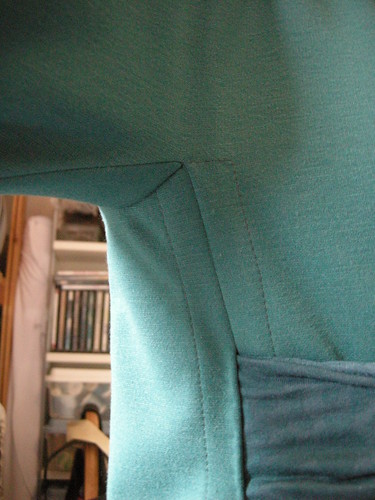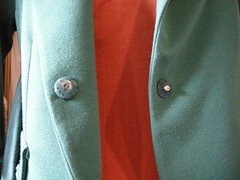It's beyond the Sewing Lawyer. She has occasionally read the rules and has always immediately dismissed the idea of participating. She prefers to (mentally) endlessly reformulate a stream of projects which may or may not employ fabric, patterns and other bits from her stash, thumb aimlessly through her stack of Burda magazines and bulging pattern files, examine each and every bolt in the local fabric store to see what's new and what's deeply discounted, while waiting for inspiration to strike. There is rarely any kind of deadline other than hoping vaguely to be able to make something-or-other before the season (or fashion) for it has completely passed. The only advantage to be gained from not seizing the day and putting scissors to cloth is that the potential sewing disaster or fashion faux-pas is avoided, or at least put off for another day.
In the meantime, the Sewing Lawyer bumbles along making things that strike her fancy from time to time, and (mostly) turning out garments she's prepared to wear out in public, which sometimes even coordinate.
Ya, I'm exaggerating but right now it sure does feel this disorganized! Since the last post, I've got three ghostly garments which have been slapped together to test patterns and fit to show you. It is probably not a great idea to have this many ideas on the actual go. One of the patterns has even been translated (well, cut out) into actual fabric! But more on that later.
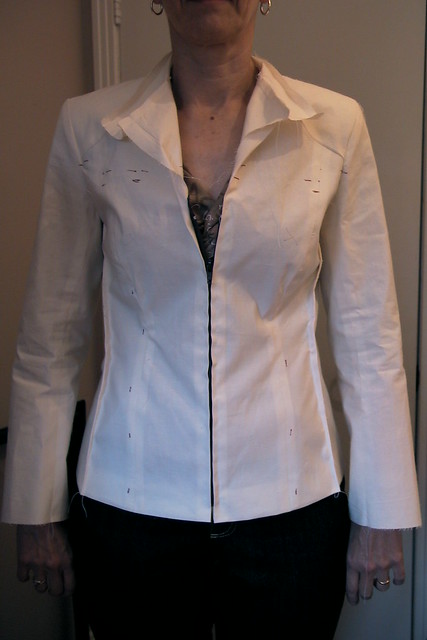 First up, I've improved the Material Things "Fearless Jacket" muslin immensely and I'm warming to the idea of actually using it to make out of my luscious lamb leather. I took the muslin completely apart, adjusted the tissue in the places I had already identified, and recut the pieces. I was at about size 0 (if there had been such a thing) on the MT tissue. After sewing it together again I realized that it was still too big! If I was at 0 before, I guess this is size -2. In the Big 4, I would usually choose a 10 as my base size. The new tucks are out of the side front and centre/side back seams. The other change that needs to be made is to raise the armscye to improve mobility - the muslin looks ok while I have my arms at my side but when I raise them it's not a good look.
First up, I've improved the Material Things "Fearless Jacket" muslin immensely and I'm warming to the idea of actually using it to make out of my luscious lamb leather. I took the muslin completely apart, adjusted the tissue in the places I had already identified, and recut the pieces. I was at about size 0 (if there had been such a thing) on the MT tissue. After sewing it together again I realized that it was still too big! If I was at 0 before, I guess this is size -2. In the Big 4, I would usually choose a 10 as my base size. The new tucks are out of the side front and centre/side back seams. The other change that needs to be made is to raise the armscye to improve mobility - the muslin looks ok while I have my arms at my side but when I raise them it's not a good look. 
My second muslin is supremely uninteresting, but it's the one that's getting made first. This is from a 1990s Burda envelope pattern which I have made before and wore to death. I still really love the picture on the envelope.
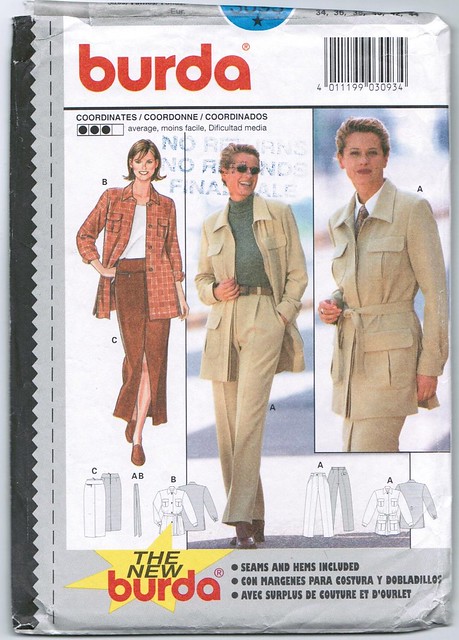
I made a muslin only to check how much too low these armscyes are - I'm raising them by 2.5cm (1") so the answer is - a lot!
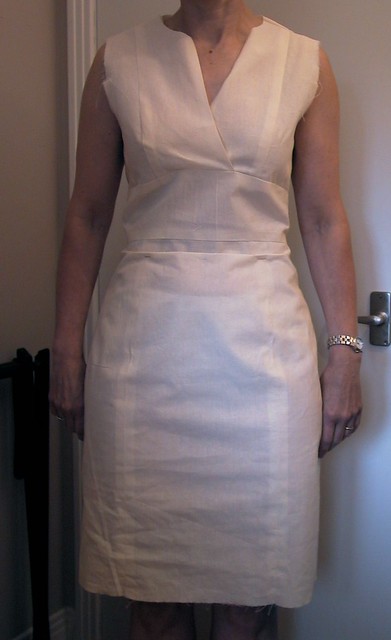 My final ghostly garment is a muslin of Vogue 1183, the second Kay Unger dress released this summer. I could tell from the measurements printed on the pattern that this dress was going to be a snugger fit than V1182, my cocktail dress. Before cutting out the muslin, I separated the skirt front into two so there will be princess seams instead of darts. The back already has a corresponding seam and the bodice is princess-seamed all over the place, so this change seems natural and adds more opportunities to adjust fit. For the muslin I cut a size 10 in the bodice and midriff, transitioning to a 12+ at the hips.
My final ghostly garment is a muslin of Vogue 1183, the second Kay Unger dress released this summer. I could tell from the measurements printed on the pattern that this dress was going to be a snugger fit than V1182, my cocktail dress. Before cutting out the muslin, I separated the skirt front into two so there will be princess seams instead of darts. The back already has a corresponding seam and the bodice is princess-seamed all over the place, so this change seems natural and adds more opportunities to adjust fit. For the muslin I cut a size 10 in the bodice and midriff, transitioning to a 12+ at the hips. It is too snug.
Besides that, there is something strange happening at the join between the bodice and midriff at the front. It almost feels like I need an FBA (!). I notice that several reviewers of this dress on PR had a problem with the overlap gaping - they did need an FBA. Mine isn't gaping so much as the leading edges of the front are pulling up on the midriff piece.
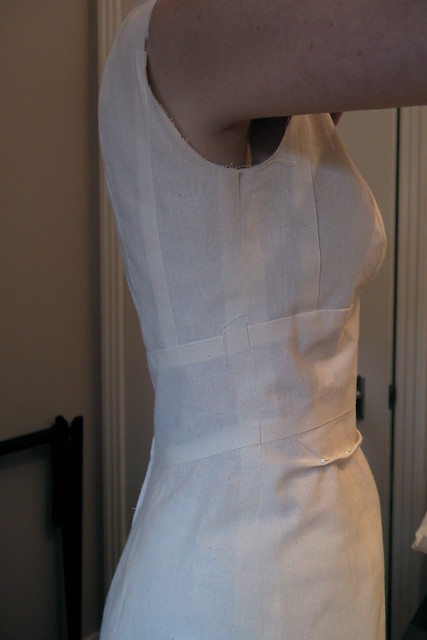 Here's another picture (in which the left neck edge is not folded under). I'm going to mull this over some more but if you have a suggestion for how to fix this, please put it in the comments!
Here's another picture (in which the left neck edge is not folded under). I'm going to mull this over some more but if you have a suggestion for how to fix this, please put it in the comments!But the strangest thing is that the skirt front is too long on me just below the midriff, around the level of my actual waist. I've pinned out a wedge/tuck that is about 2cm deep at CF and tapers to nothing at the side seams. You can see it better in the side view to the right.
I really like the way the midriff piece curves downward in the back.

The back fits pretty well except for the too-tightness of it.
It's also too short for my taste. The muslin hits about 1cm above where I'd like the finished edge to land, and it includes the hem allowances!
